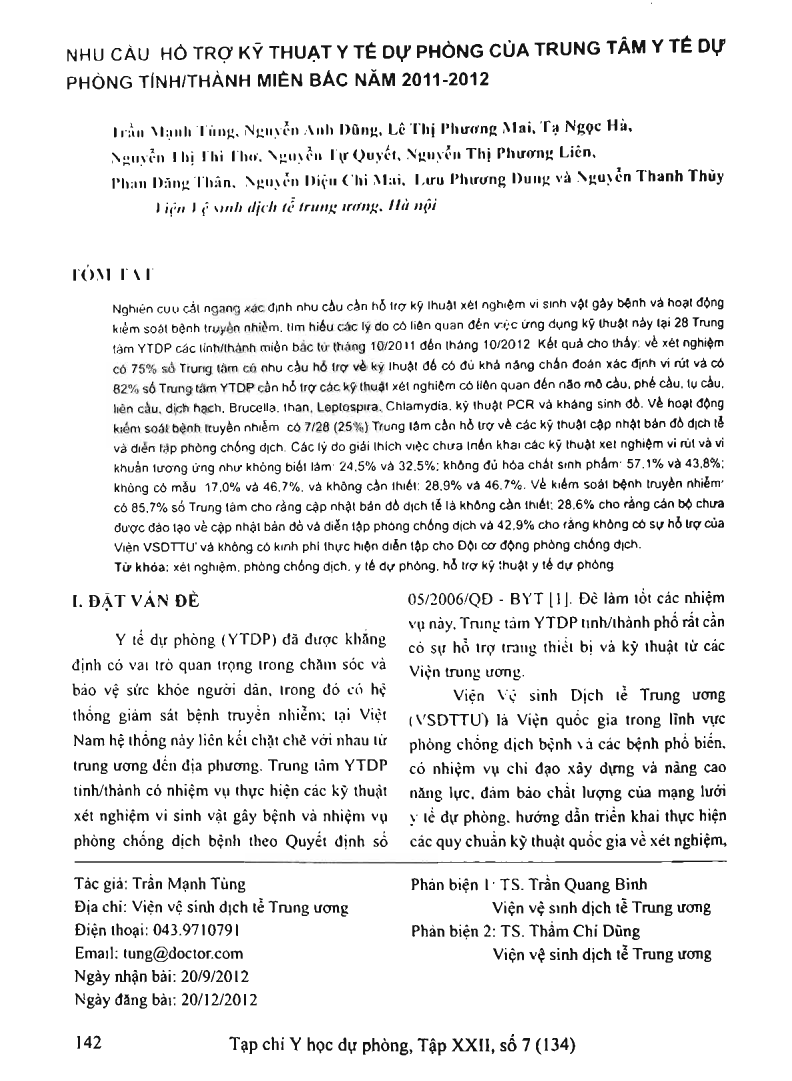
A cross-sectional study was conducted to assess the need for technical support on pathogenic microorganism laboratory tests and infectious diseases contrQI activities aimed to find out the factors related to the application of these techniques in 28 Provincial Preventive Medicine Centers in the North from 10/2011 to 10/2012. The results showed that the need for technical assistance on laboratory tests to confirm the viruses was 75 percent, technical review on other test was 82 percent, e.g. on meningitis, pneumococcus, staphylococcus, streptococcus, plague, Brucella, coal, Leptospira, Chlamydia, PCR and antibiotic. On the control of infectious diseases, the need for technical assistance was 25 percent (7/28 provinces) who were able to update the maps of epidemiological and preventive exercises. The factors asssociated with the ability to perform technical tests on VIruS and bacteria were "do not know" (24.5 percent and 32.5 percent); no chemical products (57.1 percent and 43.8 percent); without form (17.0 percent and 46.7 percent) and not necessary (28.9 percent and 46.7 percent), respectively. On infectious disease control, it was 85.7 percent soppsoed that updating the epidemiological maps was not necessary; 28.6 percent indicated that staff have not been trained on updated maps and preventive exercises; 42.9 percent said that without the support of the NIHE and no funding for implementation exercises for team responses to the epidemic control and prevention.
- Đăng nhập để gửi ý kiến
